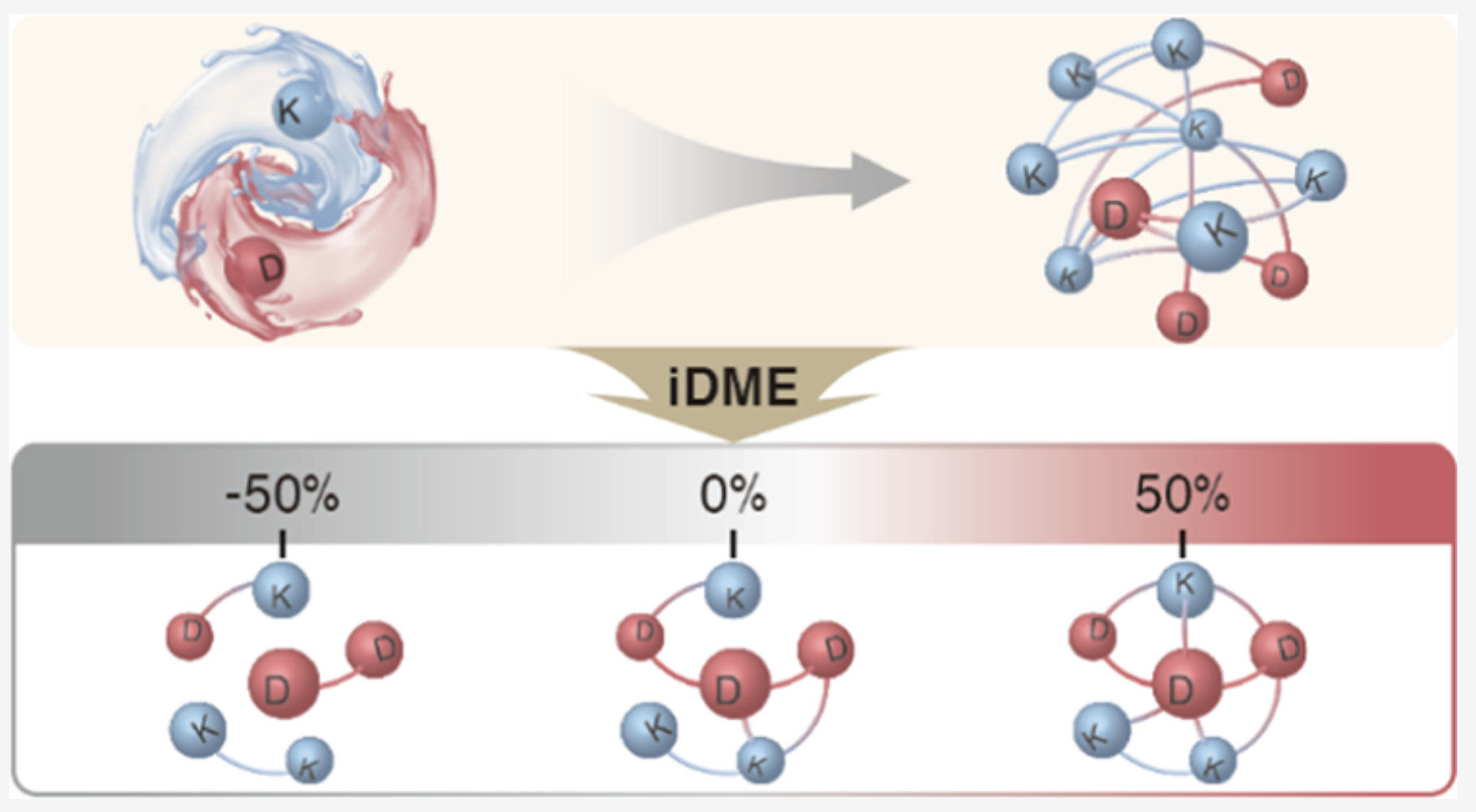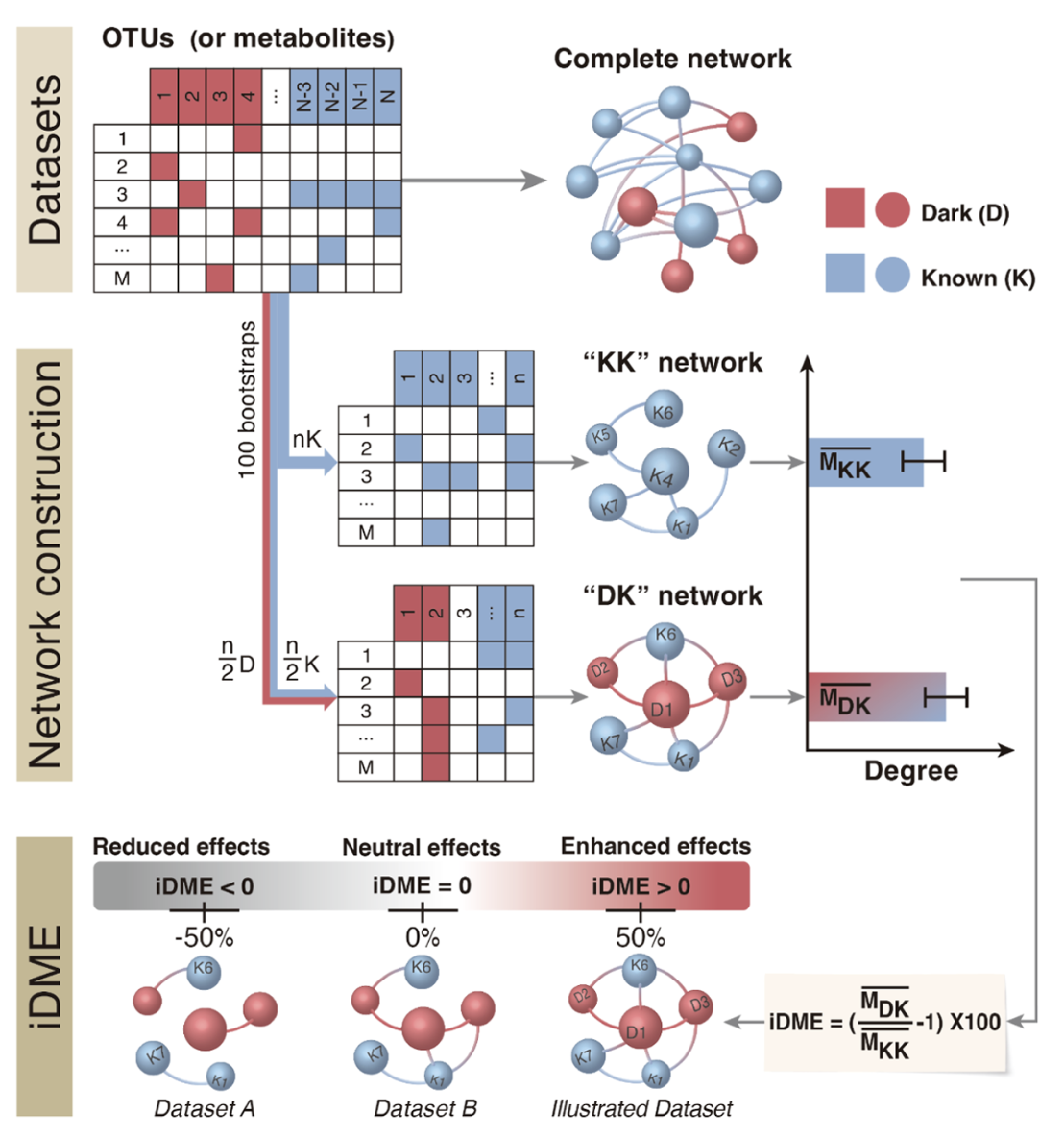Global change is altering Earth’s biogeochemical cycles by rewiring the links between microbes and organic matter. However, < 1% of bacterial species have been cultured, and fewer than half of the identifiable major bacterial lineages or phyla include cultivated representatives. Similarly, a large proportion of natural organic matter remains uncharacterized. For instance, in sediments and water of global rivers, only 8.7% and 9.6% of 50,942 and 48,392 m/z peaks of dissolved organic matter, measured using Fourier transform ion cyclotron resonance mass spectrometry (FT-ICR MS), could be assigned to identifiable molecular formulae, respectively. These unknown majorities are colloquially called biological and chemical “dark matter”, like the as-yet-undetected mass in the universe.
In this study, we assessed how dark matter influenced microbial communities and dissolved organic matter (DOM) assemblages. We did so by developing an indicator to quantify the effect of dark matter on taxa-taxa and metabolite-metabolite interactions, respectively. This indicator of dark matter effects (iDME) was based on ecological co-occurrence networks, which are a powerful tool to understand ecological roles and interactions within biological communities.
This indicator iDME and the associated applications are now published in Environmental Science & Technology (Hu et al 2023). The link is: https://pubs.acs.org/doi/10.1021/acs.est.2c05052. Dowload the PDF file.
Abstract
There are vast but uncharacterized microbial taxa and chemical metabolites (that is, dark matter) across the Earth’s ecosystems. A lack of knowledge about dark matter hinders a complete understanding of microbial ecology and biogeochemical cycles. Here, we examine sediment bacteria and dissolved organic matter (DOM) in 300 microcosms along experimental global change gradients in subtropical and subarctic climate zones of China and Norway, respectively. We develop an indicator to quantify the importance of dark matter by comparing co-occurrence network patterns with and without dark matter in bacterial or DOM assemblages. In both climate zones, dark matter constitutes approximately 30–56% of bacterial taxa and DOM metabolites and changes connectivity within bacterial and DOM assemblages by between −15.5 and +61.8%. Dark matter is generally more important for changing network connectivity within DOM assemblages than those of microbes, especially in the subtropical zone. However, the importance of dark matter along global change gradients is strongly correlated between bacteria and DOM and consistently increased toward higher primary productivity because of increasing temperatures and nutrient enrichment. Our findings highlight the importance of microbial and chemical dark matter for changing biogeochemical interactions under global change.
Reference
Hu, A., F. Meng, A. J. Tanentzap, K.-S. Jang, and J. Wang. 2023. Dark Matter Enhances Interactions within Both Microbes and Dissolved Organic Matter under Global Change. Environmental Science & Technology 57:761-769. [pdf download]

